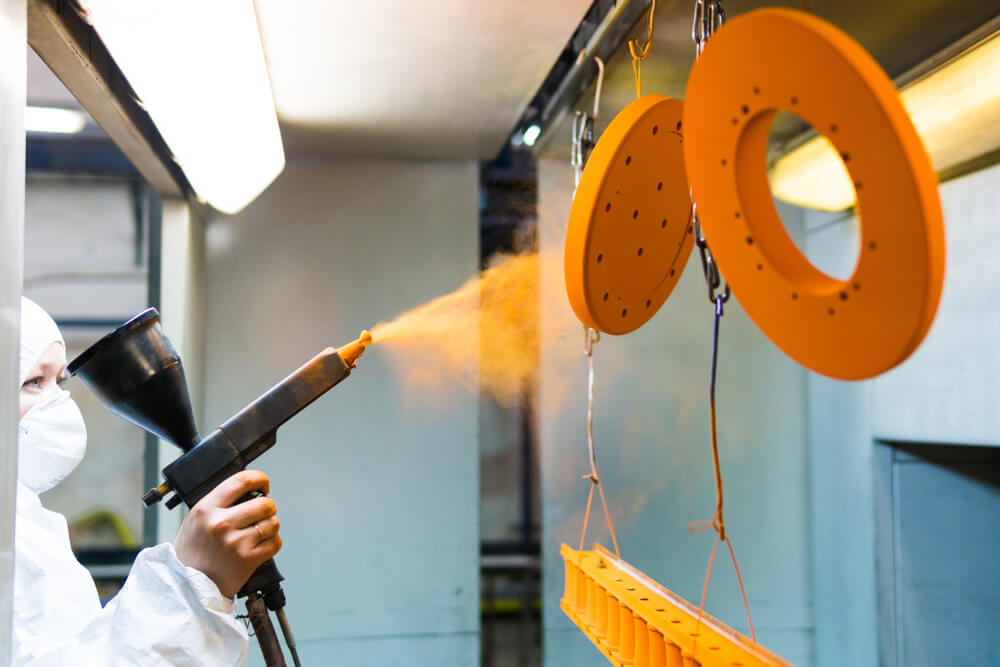Introduction
In industrial and commercial environments, painting is far more than a cosmetic choice. The right coatings and prep techniques contribute to efficiency, safety, and longevity—extending the life of assets and enhancing the usability of entire facilities. It’s a domain where durability meets precision, and not all painting companies are equipped to handle the stakes.
Whether it’s a factory floor, commercial storefront, or specialized machinery, these projects demand planning, technical understanding, and the right materials for high-performance environments. The wrong approach can result in premature wear, corrosion, compliance issues, or costly rework.
That’s where MasterCraft Coatings brings unique value. With extensive experience in commercial painting, industrial painting, and machine painting, their team delivers lasting results tailored to the realities of operational settings. Here’s a look at the complexities behind this essential service—and why it matters for business success.
Why Commercial and Industrial Painting Is So Complex
Surface Demands and Environmental Stress
Unlike residential settings, commercial and industrial spaces are exposed to constant foot traffic, chemical exposure, extreme temperatures, and heavy machinery use. Surfaces need more than color—they require performance coatings that protect against:
- Abrasion from carts, forklifts, and machinery
- Exposure to oils, solvents, or industrial cleaners
- Humidity, temperature shifts, and corrosion risks
- UV degradation and weather extremes for outdoor zones
Every commercial or industrial painting job starts with a clear understanding of how a surface is used daily.
Compliance and Safety Regulations
Many industries, especially manufacturing, food processing, or healthcare, must meet OSHA, FDA, or EPA compliance guidelines for their finishes. This includes:
- Anti-microbial coatings in medical or food prep areas
- Non-slip coatings for floor safety in warehouses
- Low-VOC or fire-retardant coatings where required by code
These requirements guide material selection, prep procedures, and even timing.
Commercial Painting: Enhancing Brand and Function
Branding Meets Functionality
Commercial painting isn’t just about protection—it plays a critical role in creating a professional image. Color schemes, signage integration, and exterior aesthetics all shape customer impressions. But functionality remains just as important.
A high-traffic retail environment needs coatings that resist scuffs, are easy to clean, and align with brand aesthetics. Office spaces benefit from light-reflective colors that reduce energy costs and improve focus. And public-facing exteriors must maintain curb appeal despite the elements.
Interior Painting for Business Spaces
Interior painting in commercial settings often includes:
- Conference rooms and open office layouts
- Hallways, stairwells, and reception areas
- Breakrooms, restrooms, and specialty zones
Durable finishes like semi-gloss or satin are ideal for easy maintenance, and flexible scheduling is critical to avoid business disruption.
Industrial Painting: Built for Harsh Realities
The Role of Protective Coatings
In industrial spaces, coatings aren’t about appearance—they’re critical to equipment life and safety. Common areas for industrial painting include:
- Structural steel supports and warehouse beams
- Concrete floors requiring chemical and impact resistance
- Manufacturing zones with extreme temperatures or vibration
Epoxy coatings, urethane finishes, and specialized primers are selected based on chemical resistance, cure time, and exposure levels.
Machine Painting: Precision Meets Durability
Machine painting is a specialized niche requiring:
- Disassembly or masking of sensitive components
- Coatings resistant to lubricants, abrasives, and vibrations
- Controlled environments to avoid contamination during cure time
It’s not simply about spraying a surface—it’s about applying engineered coatings that extend equipment lifespan without affecting function or tolerance.
The Importance of Proper Surface Prep
Failure Starts with Poor Prep
No matter how advanced a coating is, it will fail without surface preparation. Prep for commercial and industrial painting often includes:
- Sandblasting or power washing to remove previous coatings and contaminants
- Priming to enhance adhesion and fill surface irregularities
- Moisture and pH testing on concrete before applying epoxy or urethane
Cutting corners in prep leads to bubbling, peeling, and premature failure—especially in challenging environments.
Exterior Painting in High-Exposure Zones
Weatherproofing and Protection
Exterior painting on commercial and industrial properties has added layers of complexity:
- UV protection to prevent fading and chalking
- Waterproof coatings to prevent moisture intrusion
- Expansion joint painting to accommodate material movement
Siding, fascia, doors, and loading docks must all be coated with high-performance materials that withstand daily exposure.
Integration with Siding and Carpentry Work
When siding is damaged or outdated, painting alone won’t solve the issue. That’s why commercial exterior updates often involve siding and carpentry alongside paintwork. This may include:
- Repairing wood rot, replacing boards or panels
- Reinforcing structural framing or trim
- Sealing seams and joints before priming and painting
A combined approach ensures both visual appeal and structural soundness—especially for large-scale storefronts or multifamily buildings.
Scheduling and Operational Coordination
Painting Without Disrupting Business
Commercial and industrial painting often requires strategic planning to avoid business interruption. That includes:
- After-hours or weekend work schedules
- Phased projects to maintain safe access for employees
- Coordination with other trades or site managers
Flexibility is key—especially in facilities that run 24/7 or can’t halt operations for long periods.
What to Look for in a Commercial/Industrial Painter
- Experience Across Environments: From warehouses to retail, machine shops to office towers—experience informs everything from prep to finish.
- Material and Safety Knowledge: Understanding industrial-grade products and compliance is essential.
- Team Scale and Equipment: Large crews, boom lifts, and sprayers designed for high-volume jobs make all the difference.
- Willingness to Customize: From colors to coatings to schedules, solutions must match operational needs.
Conclusion
Commercial and industrial painting is an essential investment—not just in how a facility looks, but in how it performs, lasts, and represents the brand. From machine painting precision to exterior weatherproofing and integrated siding and carpentry, these projects demand experience and attention to detail.
MasterCraft Coatings brings that expertise to every job. With tailored solutions for interior painting, exterior painting, commercial painting, and industrial surfaces, they deliver finishes that are as functional as they are professional.
In environments where every layer counts, paint is more than decoration—it’s protection, identity, and performance, all rolled into one.
